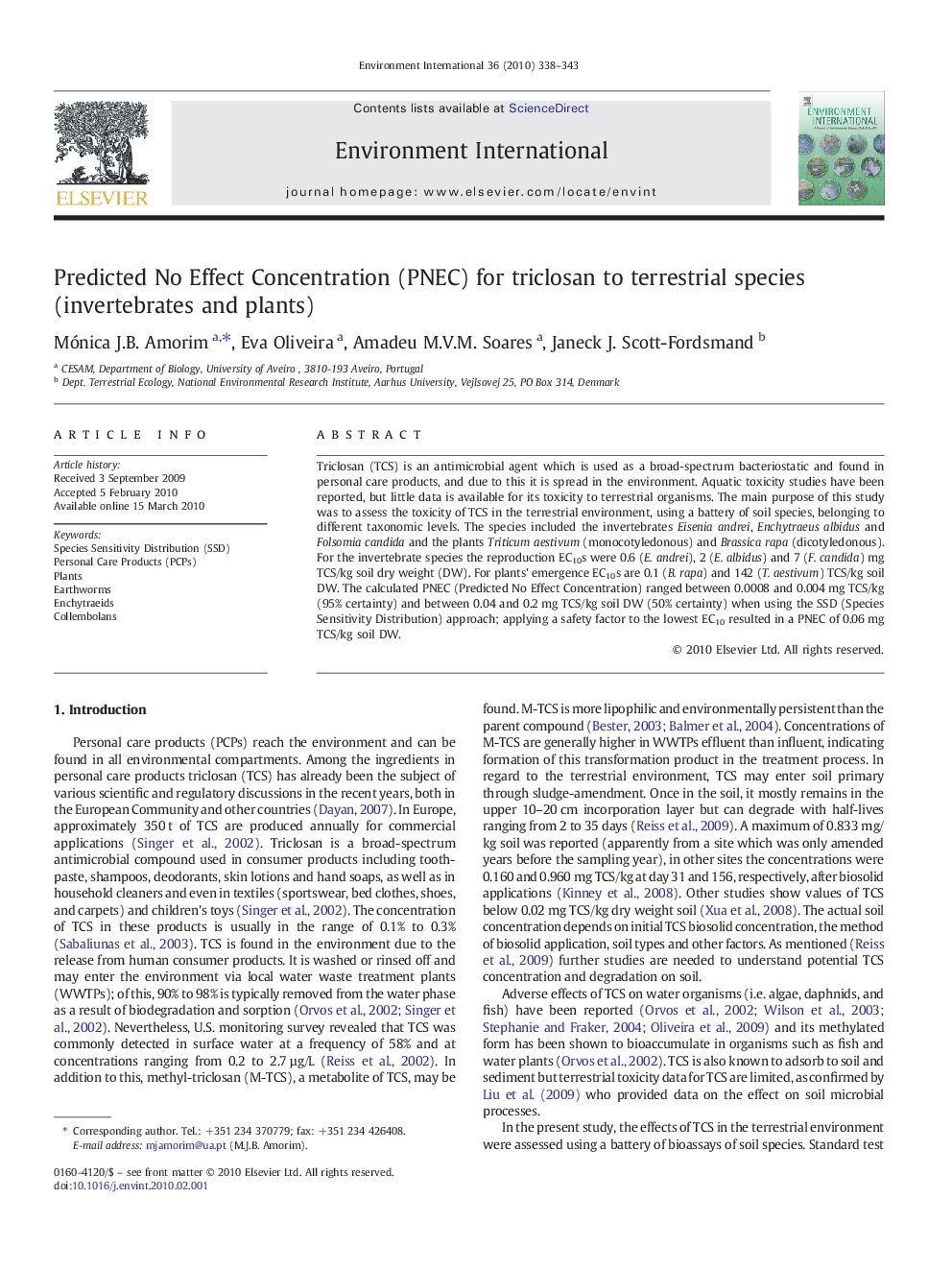| Article ID | Journal | Published Year | Pages | File Type |
|---|---|---|---|---|
| 4423473 | Environment International | 2010 | 6 Pages |
Triclosan (TCS) is an antimicrobial agent which is used as a broad-spectrum bacteriostatic and found in personal care products, and due to this it is spread in the environment. Aquatic toxicity studies have been reported, but little data is available for its toxicity to terrestrial organisms. The main purpose of this study was to assess the toxicity of TCS in the terrestrial environment, using a battery of soil species, belonging to different taxonomic levels. The species included the invertebrates Eisenia andrei, Enchytraeus albidus and Folsomia candida and the plants Triticum aestivum (monocotyledonous) and Brassica rapa (dicotyledonous). For the invertebrate species the reproduction EC10s were 0.6 (E. andrei), 2 (E. albidus) and 7 (F. candida) mg TCS/kg soil dry weight (DW). For plants' emergence EC10s are 0.1 (B. rapa) and 142 (T. aestivum) TCS/kg soil DW. The calculated PNEC (Predicted No Effect Concentration) ranged between 0.0008 and 0.004 mg TCS/kg (95% certainty) and between 0.04 and 0.2 mg TCS/kg soil DW (50% certainty) when using the SSD (Species Sensitivity Distribution) approach; applying a safety factor to the lowest EC10 resulted in a PNEC of 0.06 mg TCS/kg soil DW.
